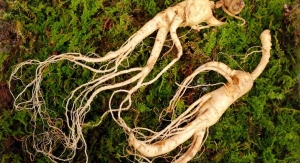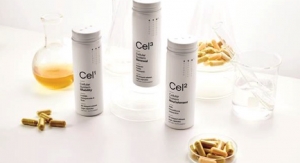By Sean Moloughney, Editor09.07.17
As the dietary supplement industry has evolved and matured, research and development teams have discovered novel nutraceuticals and fine-tuned processing technologies. Analytical testing methods have expanded as well to ensure that what’s listed on the label is actually in the product. Ultimately, understanding and applying methods that are fit for their intended purpose will help to validate quality controls.
Testing in the supplements industry has grown more sophisticated over the years, according to John Travis, senior research scientist, NSF International. “New techniques and instrumentation developed by researchers and instrument manufacturers have expanded the analyst’s toolbox. Commercialization of next generation DNA sequencing and high resolution mass spectrometry have brought capabilities that were once only available to researchers into production laboratories. I believe the supplement industry has become more technically savvy as well. I no longer get blank stares when I use acronyms like HPLC, MS, and GC during seminars and presentations.”
Elan Sudberg, CEO, Alkemist Labs, said he believes greater focus on Good Manufacturing Practice (GMP) compliance has fueled a steady increase in testing over the 20 years that his company has been testing products in the nutraceuticals industry. “It has not been a straight path; there have been many ups and downs along the way due to various adulteration challenges, hyped ingredients that cause supply and demand disruptions, which open the door to adulteration, and major recalls.”
Steven Dentali, PhD, botanical sciences consultant, also suggested that focus on GMPs, in a growing industry, may be why testing of dietary supplement ingredients is on the rise. “After all, testing is integral to ensuring that established specifications are met. A test, whereby a method is followed and results reported and compared to a specification, is basic quality control. The value of a test derives from its place in a quality program and the understanding that it helps assure the practices and procedures of a quality program are working. It’s not of value on its own, which is why it’s appropriately said that you can’t ‘test in’ quality. It has to be built from the ground up.”
Transparency, regulatory challenges, and the Food Safety Modernization Act (FSMA) drive the point that botanicals can’t be bought on specification alone, he added. “The danger in doing so arises from the fact that specifications (and tests) in and of themselves do not assure quality. They are simply tools to implement coherently within a quality program.”
‘Fit for Purpose’
In 2015, New York Attorney General Eric Schneiderman set off a cascade of controversy after claiming that DNA tests suggested store brand herbal supplements from major retailers didn’t contain what they claimed. Eventually, GNC reached an agreement with the NY AG’s office to expand testing processes and integrate traceability standards, including use of DNA barcode testing to confirm the authenticity of plants used as sources for its herbal supplements, prior to processing.
“After New York Attorney General Schneiderman’s attempt to supersede the FDA two years ago, there was a flurry of calls for DNA testing, even though it usually is not the correct fit for purpose method for testing herbal products,” said Mr. Sudberg. “We spent a lot of time trying to educate the industry as to what constitutes fit for purpose testing, because of a clear lack of industry wide understanding of how crucial that is outside of quality departments. Our education campaign, coupled with some other industry experts being the voice of reason, helped focus testing on methods appropriate to the substances being evaluated.”
Dr. Dentali also stressed that above all, tests must be fit for their intended purpose. “A scientifically valid DNA test to determine if a plant species is the one specified may be quite appropriate when dealing with raw agricultural materials or the crude herbs that go into making herbal ingredients. It can support the initial determination made by a botanist who employed classical procedures to know what the genus and species of the plant is. Plants that have been properly identified in this manner are the foundation for curated libraries of DNA test results. As with all testing, appropriate, valid standards are necessary touchstones.”
At times, companies will market botanically-derived ingredients based on the levels of particular constituents, he continued. “In these cases, valid analytical tests carried out by laboratories that have demonstrated their capability to perform those tests appropriately are critical for verifying the presence of those constituents at the levels specified.”
Testing of botanicals, whether raw materials, ingredients, or finished products—as with all analytical tests—relies on the methods, standards, and laboratory performance, he noted.
“Methods of analysis—that thing that is done to generate a certificate of analysis (CoA)—must meet specific criteria to be considered as scientifically valid. In short, their performance in the hands of capable laboratories must be up to snuff. It takes a considerable amount of work to determine if a method is ‘good enough’ to become recognized as official. AOAC INTERNATIONAL is one such group that facilitates the development of officially recognized methods of analysis.”
Standards are critical in that they are the yardstick by which other things are measured, Dr. Dentali continued. “This is especially important with DNA analysis because, in order for validated methods to produce appropriate results there has to be DNA libraries of known (certified as authentic) materials for comparison. So far there doesn’t appear to be reference libraries that can be relied upon. However, the National Institute of Standards and Technology (NIST) is starting to add genomic (DNA) information to their certified reference standards.”
NIST, in collaboration with the National Institutes of Health (NIH) Office of Dietary Supplements (which also supports the dietary supplement program at AOAC) also runs a Dietary Supplement Laboratory Quality Assurance Program where laboratories can use whatever method they want to analyze material with known properties, Dr. Dentali said. This way laboratories can anonymously see how their results stack up against those of their peers and offer opportunities for improvement.
“Methods, standards, and laboratory performance are intimately tied to the other triad of specifications, methods, and certificates of analysis,” he said. “All parts must be connected within a larger quality program to ensure that specifications are appropriate and are not the sole arbiter of quality.”
Testing Formula
Other experts agreed that a successful test method must be fit for a specific purpose, providing accurate and precise results in a timely manner. “In the GMP arena, these test methods are implemented as part of a quality assurance program to verify that ingredients and products meet specifications,” said NSF’s Mr. Travis. “Quality control procedures must be in place for test methods as well. These controls assure method performance with routine use.”
Mr. Sudberg offered a list of questions to consider in the context of a successful testing protocol. “First, it must be fit for purpose. What is the material? Are you trying to verify identity or something else? Are there existing methods that can be verified and utilized, or must new methods be developed to meet the unique testing subject? Will testing be internal or external? If external, when can you audit their facilities? Is there any accreditation? If so, what is the scope? ISO 17025 is wonderful as long as it’s for a relevant (to you) test method.”
Nandakumara Sarma, PhD, director, Dietary Supplement Standards, USP, said testing protocol must use science-based methods that “1) can identify an ingredient while discriminating from other closely related compounds or botanical species (element of specificity); 2) provide correct value for the label claim (element of accuracy); 3) are not interfered by other components of the products such as in multi-ingredient formulas; and 4) are robust within the analytical range.”
Nick Price, product manager for analytical services, Mérieux NutriSciences, said the basic elements of nutraceutical testing are similar to those applied in the food world. First involves pulling representative samples at the right locations and times. “This will vary depending on a company’s specific supplier situation. For example, a product from new suppliers might be tested more frequently whereas products from established, trusted suppliers would be tested less often.”
The appropriate test methods must be performed by a laboratory equipped to perform them, and interpreting test results should be left to the experts, he said. “The necessary expertise for reviewing and interpreting test results should be in place or otherwise sought from a third party.”
Addressing Challenges
The greatest challenge in testing dietary supplements is the complexity of products, according to NSF’s Mr. Travis. A method that works for one finished product may not work for another. “For example, a laboratory may have a routine method for testing cholecalciferol, which was validated on a multi-vitamin tablet product, but that method may not be fit to analyze a soft gel product type. We need to assess each formulation to ensure that the method is fit to analyze that formulation.”
At this point in the industry’s evolution, there are already test methods developed for most plants used in dietary supplements, according to Mr. Sudberg, or they exist for their closely related cousins and those can be easily adapted.
“One of the biggest challenges we’re seeing is testing novel ingredients. In some cases the test sample was extracted in a very unique way that has eliminated unwanted phytochemical constituents, usually leaving only one component of interest. Sometimes that component is not unique to the plant from which it was claimed to be derived, so we have to fail the sample as not being chromatographically equivalent to the reference samples we compared it to.”
He offered the example of caffeine, which is a component of different plants. “If the tea is extracted so caffeine is all that is left in a green tea extract, we can’t confirm it as green tea. If suppliers of novel ingredients work with testing labs to describe their processing so the lab understands how we need to test that specific ingredient, it saves all parties involved a lot of time and trauma. We encourage suppliers of such novel ingredients to have at least two or three testing labs familiar with their ingredients and how to test them.”
USP’s Dr. Sarma said supplement GMP warning letters show that several manufacturers are challenged by the requirement to use appropriate scientifically valid methods. “Preamble to the GMPs (21CFR111) notes that ‘a scientifically valid method is one that is accurate, precise, and specific for its intended purpose.’ The challenge for the manufacturers is to develop a scientifically valid method that meets the above expectation. Some manufacturers were cited for using non-specific methods such as pH, particle size, or color. To address this challenge, my advice for companies is to adopt public standards (such as USP monographs) where appropriate testing procedures to assess the quality are available.”
USP has over 500 monographs for dietary ingredients and dietary supplements. “The use of public standards will reduce the burden on the manufacturers from taking the onus of developing testing methods on themselves and provide transparency of the information across the supply chain.”
Mérieux’s Mr. Price, said his company has found that many nutraceuticals do not have recognized tests, but instead companies are left only being able to test for components. “Another big challenge has been the difficulty in finding reference materials in order to validate the reliability of an analytical method. Mérieux NutriSciences’ advice would be for companies to work closely with industry affiliates that are concentrating efforts in this area, like AOAC. AOAC has established a Stakeholder Panel on Dietary Supplements (SPDS), which is seeking industry consensus on method requirements, before searching for methods that meet those requirements.”
Categories of Concern
Over the years, several ingredients and product categories have been susceptible to adulteration. Generally, experts noted that weight loss, muscle building, and sexual enhancement products are high-risk.
“Active Pharmaceutical Ingredients (APIs) pepper products sold in those categories so they will provide the desired affect without care or concern for adverse events, particularly since those ingredients are not on the label,” said Mr. Sudberg. “Labs that focus on these categories are constantly chasing a moving target and must think ahead of the criminals who keep them busy, much like a game of whack-a-mole. Internally we have a ‘frequently failed’ list as well as common adulterants for common botanicals that we keep in the forefront of all our testing. We also contribute to and utilize industry resources such as the American Herbal Products Association (AHPA) Known Adulterants list and American Botanical Council’s (ABC) botanical adulterants program.”
Mr. Travis said researchers have reported that consumers of weight loss, sexual enhancement and bodybuilding products are generally more willing to take risks and “that includes consuming edgy products with outlandish claims.”
He also acknowledged adulteration of ginkgo, St. John’s Wort and saw palmetto. “From an ingredient standpoint, the two contributing factors are non-specific methods used to verify specifications and ingredients purchased based on price alone.”
As the complexity of product composition and economic motivation increases, adulterators may feel incentive to introduce adulterated products into the market, explained Dr. Sarma. “Appropriate test methods that can detect the potential adulterants will help in addressing this serious problem. USP has recently introduced a Chapter <2251> Screening for Undeclared Drugs and Drug Analogs with methods to screen for synthetic adulterants in the sexual enhancement categories.”
As in the food industry, Mr. Price said there seems to be an increased vulnerability to adulteration with ingredients that are sourced globally from multiple supplier locations. “One example of this is when the source of an ingredient is more expensive in one location vs. another location, such as ginkgo biloba. It’s recommended to always question the associated costs of ingredients when there is a large discrepancy among different suppliers for a specific ingredient. Beyond this specific example, everything from climate fluctuations to political conditions in different regions can have an impact on a product’s vulnerability to fraud, so ongoing vulnerability assessments should be a top priority for manufacturers.”
Inside Look at DNA Testing
Significant attention has been given to DNA testing of botanical raw materials and finished dietary supplement products that contain them as a function of quality assurance and quality controls, noted Alexander Schauss, PhD, FACN, CFS, senior director of research and CEO, AIBMR Life Sciences, Inc., Seattle, WA. “The problem is that not all barcoding is the same, nor reliable, especially for finished product testing. Old barcoding technologies need to be replaced by newer methods that are far superior to traditional barcoding (Sanger sequencing) methods. Rahul S. Pawar and colleagues with the U.S. FDA Office of Regulatory Science at the Center for Food Safety and Applied Nutrition (CFSAN) have recently published a paper in Planta Medica that the industry and the labs that serve them need to read titled, ‘Assessment of the authenticity of herbal dietary supplements:comparison of chemical and DNA barcoding methods.’
In the FDA’s study, the authors collected 112 market samples of frequently consumed botanicals Valeriana officinalis, yohimbe, and St. John’s Wort (Hypericum perforatum). Each product was analyzed for specific chemical markers typically tested for in analytical laboratories. They also tested each product using traditional DNA barcoding techniques targeting the nuclear ITS2 gene and the chloroplast gene psbA-trnH on the same samples. In this way they could determine the presence of DNA of the labeled ingredient,” Dr. Schauss explained. “They then compared the results obtained by both methods.”
Although traditional DNA barcoding has been successful in appropriate circumstances in contributing to the assessment of identity and authenticity of botanical supplements, the authors concluded that, “when applied to the analysis of finished products, traditional barcoding often shows limited success and may provide unreliable results.”
For this reason, they recommend that instead “newer chemical analytical approaches (e.g., principal component analysis) and use of mini-barcodes of NGS [next-generation sequencing] show great promise and will be needed for analyzing complex botanical supplement products.”
“Whereas, in contrast to ‘traditional’ barcoding, NGS assigns a unique sequence to not just all of the molecules in a sample, but to all of the molecules being amplified and sequenced. This is what makes NGS superior to traditional barcoding,” Dr. Schuass noted.
“Pawar’s conclusions support that of Invanova’s group who reported in PLoS One in 2016 on their work using NGS to authenticate herbal supplements,” he continued. “When testing for Echinacea purpurea, Valeriana officinalis, Ginkgo biloba, Hypericum perforatum, and Trigonella foenum-graecum, they concluded that NGS ‘enables reliable detection of plant and fungal DNA and can be utilized by manufacturers for quality assurance of raw plant materials, contamination during the production process, and the final product.’ They also concluded that Sanger sequencing, which was developed by Frederick Danger and colleagues in 1977 as a method of DNA sequencing, should not be used for testing herbal supplements due to ’its inability to resolve mixed signals from samples containing multiple species.’ NGS-based approaches are far superior in that they are able to reliably and effectively detect DNA in complex mixtures.”
NSF International is using next generation sequencing technology for DNA testing of botanical ingredients, according to Mr. Travis. NSF’s Target Specific DNA Sequencing (TSDS) process is a valuable authentication tool to be used in combination with chemical and microbiological testing. Like any test method, DNA testing has its limitations. For example, no DNA technology is capable of identifying plant parts (stem, leaves, seeds, etc.) This is noteworthy because certain phytochemicals are only found in specific parts of the plant. This is why we recommend conducting DNA testing first to authenticate the species and to identify the DNA of other plants that could cause potential safety or quality concerns. If appropriate, we then recommend following up with necessary chemical and/or morphological testing to determine the plant part present.”
Mr. Sudberg said DNA testing has a role in the array of testing methods when performed by trained experts who understand the kinds of substances they are working with, and have access to the better-established test methods to augment the DNA testing’s limitations. “DNA testing has the capacity to unveil genus, species, and even cultivar. However, it is not a standalone method because it can’t give accurate results on extracts, most of which have little or no actual plant tissue left. It also doesn’t quantify, so the traces of substances not on the label, like rice via excipients, are identified even though the amounts are tiny. Plant part identification is crucial to botanical ID testing and DNA is also not capable of plant part differentiation.”
Critical tools for botanical identity verification include botanical microscopy, HPTLC/MS and HPLC fingerprinting, and botanical reference standards, he added. “Chromatography, both TLC and HPLC, are effective tools for unraveling the complex chemistry of botanical products, thus proving quality and identity. Chromatography is often fitting for many of the samples that cross our lab benches, and as we guide clients toward the most appropriate testing for their needs, HPLC and TLC are common methods we recommend.”
These methods do have some limitations, but have stood the test of time and experts rely on them, he added, which is why they are accepted by government agencies like FDA, Australia’s TGA, and Health Canada.
Phytochemical reference standards are highly purified substances used in natural product testing. Their proper selection and use directly impacts the ability to assess the safety, quality, and potency of both raw materials and finished products, he added. “Botanical reference materials are plant biomass materials that have been authenticated through a variety of analytical techniques such as macroscopic verification, microscopic identification, and HPTLC. Botanical reference materials are a critical tool that helps the industry meet cGMP ingredient identification requirements.”
USP’s Dr. Sarma, said DNA-based methods for botanical identification are valuable as complementary methods. “When the specificity of the methods is established, DNA-based testing is very useful for the identification and to detection of adulterants. The major limitation is from the use of methods that cannot discriminate closely related species (thus giving false positives) or from the application of the methods to ingredients whose DNA is degraded, such as extracts (thereby giving false negative results).”
Mr. Price said DNA testing can offer valuable insight when trying to determine if what you’re testing for is present. “The limitations are that that is really the only information you will get. Also the results are only semi-quantitative. If you are looking for allergens, DNA testing will not detect the allergenic component, it only will tell you the species from which the allergenic component might have come from.”
Testing in the supplements industry has grown more sophisticated over the years, according to John Travis, senior research scientist, NSF International. “New techniques and instrumentation developed by researchers and instrument manufacturers have expanded the analyst’s toolbox. Commercialization of next generation DNA sequencing and high resolution mass spectrometry have brought capabilities that were once only available to researchers into production laboratories. I believe the supplement industry has become more technically savvy as well. I no longer get blank stares when I use acronyms like HPLC, MS, and GC during seminars and presentations.”
Elan Sudberg, CEO, Alkemist Labs, said he believes greater focus on Good Manufacturing Practice (GMP) compliance has fueled a steady increase in testing over the 20 years that his company has been testing products in the nutraceuticals industry. “It has not been a straight path; there have been many ups and downs along the way due to various adulteration challenges, hyped ingredients that cause supply and demand disruptions, which open the door to adulteration, and major recalls.”
Steven Dentali, PhD, botanical sciences consultant, also suggested that focus on GMPs, in a growing industry, may be why testing of dietary supplement ingredients is on the rise. “After all, testing is integral to ensuring that established specifications are met. A test, whereby a method is followed and results reported and compared to a specification, is basic quality control. The value of a test derives from its place in a quality program and the understanding that it helps assure the practices and procedures of a quality program are working. It’s not of value on its own, which is why it’s appropriately said that you can’t ‘test in’ quality. It has to be built from the ground up.”
Transparency, regulatory challenges, and the Food Safety Modernization Act (FSMA) drive the point that botanicals can’t be bought on specification alone, he added. “The danger in doing so arises from the fact that specifications (and tests) in and of themselves do not assure quality. They are simply tools to implement coherently within a quality program.”
‘Fit for Purpose’
In 2015, New York Attorney General Eric Schneiderman set off a cascade of controversy after claiming that DNA tests suggested store brand herbal supplements from major retailers didn’t contain what they claimed. Eventually, GNC reached an agreement with the NY AG’s office to expand testing processes and integrate traceability standards, including use of DNA barcode testing to confirm the authenticity of plants used as sources for its herbal supplements, prior to processing.
“After New York Attorney General Schneiderman’s attempt to supersede the FDA two years ago, there was a flurry of calls for DNA testing, even though it usually is not the correct fit for purpose method for testing herbal products,” said Mr. Sudberg. “We spent a lot of time trying to educate the industry as to what constitutes fit for purpose testing, because of a clear lack of industry wide understanding of how crucial that is outside of quality departments. Our education campaign, coupled with some other industry experts being the voice of reason, helped focus testing on methods appropriate to the substances being evaluated.”
Dr. Dentali also stressed that above all, tests must be fit for their intended purpose. “A scientifically valid DNA test to determine if a plant species is the one specified may be quite appropriate when dealing with raw agricultural materials or the crude herbs that go into making herbal ingredients. It can support the initial determination made by a botanist who employed classical procedures to know what the genus and species of the plant is. Plants that have been properly identified in this manner are the foundation for curated libraries of DNA test results. As with all testing, appropriate, valid standards are necessary touchstones.”
At times, companies will market botanically-derived ingredients based on the levels of particular constituents, he continued. “In these cases, valid analytical tests carried out by laboratories that have demonstrated their capability to perform those tests appropriately are critical for verifying the presence of those constituents at the levels specified.”
Testing of botanicals, whether raw materials, ingredients, or finished products—as with all analytical tests—relies on the methods, standards, and laboratory performance, he noted.
“Methods of analysis—that thing that is done to generate a certificate of analysis (CoA)—must meet specific criteria to be considered as scientifically valid. In short, their performance in the hands of capable laboratories must be up to snuff. It takes a considerable amount of work to determine if a method is ‘good enough’ to become recognized as official. AOAC INTERNATIONAL is one such group that facilitates the development of officially recognized methods of analysis.”
Standards are critical in that they are the yardstick by which other things are measured, Dr. Dentali continued. “This is especially important with DNA analysis because, in order for validated methods to produce appropriate results there has to be DNA libraries of known (certified as authentic) materials for comparison. So far there doesn’t appear to be reference libraries that can be relied upon. However, the National Institute of Standards and Technology (NIST) is starting to add genomic (DNA) information to their certified reference standards.”
NIST, in collaboration with the National Institutes of Health (NIH) Office of Dietary Supplements (which also supports the dietary supplement program at AOAC) also runs a Dietary Supplement Laboratory Quality Assurance Program where laboratories can use whatever method they want to analyze material with known properties, Dr. Dentali said. This way laboratories can anonymously see how their results stack up against those of their peers and offer opportunities for improvement.
“Methods, standards, and laboratory performance are intimately tied to the other triad of specifications, methods, and certificates of analysis,” he said. “All parts must be connected within a larger quality program to ensure that specifications are appropriate and are not the sole arbiter of quality.”
Testing Formula
Other experts agreed that a successful test method must be fit for a specific purpose, providing accurate and precise results in a timely manner. “In the GMP arena, these test methods are implemented as part of a quality assurance program to verify that ingredients and products meet specifications,” said NSF’s Mr. Travis. “Quality control procedures must be in place for test methods as well. These controls assure method performance with routine use.”
Mr. Sudberg offered a list of questions to consider in the context of a successful testing protocol. “First, it must be fit for purpose. What is the material? Are you trying to verify identity or something else? Are there existing methods that can be verified and utilized, or must new methods be developed to meet the unique testing subject? Will testing be internal or external? If external, when can you audit their facilities? Is there any accreditation? If so, what is the scope? ISO 17025 is wonderful as long as it’s for a relevant (to you) test method.”
Nandakumara Sarma, PhD, director, Dietary Supplement Standards, USP, said testing protocol must use science-based methods that “1) can identify an ingredient while discriminating from other closely related compounds or botanical species (element of specificity); 2) provide correct value for the label claim (element of accuracy); 3) are not interfered by other components of the products such as in multi-ingredient formulas; and 4) are robust within the analytical range.”
Nick Price, product manager for analytical services, Mérieux NutriSciences, said the basic elements of nutraceutical testing are similar to those applied in the food world. First involves pulling representative samples at the right locations and times. “This will vary depending on a company’s specific supplier situation. For example, a product from new suppliers might be tested more frequently whereas products from established, trusted suppliers would be tested less often.”
The appropriate test methods must be performed by a laboratory equipped to perform them, and interpreting test results should be left to the experts, he said. “The necessary expertise for reviewing and interpreting test results should be in place or otherwise sought from a third party.”
Addressing Challenges
The greatest challenge in testing dietary supplements is the complexity of products, according to NSF’s Mr. Travis. A method that works for one finished product may not work for another. “For example, a laboratory may have a routine method for testing cholecalciferol, which was validated on a multi-vitamin tablet product, but that method may not be fit to analyze a soft gel product type. We need to assess each formulation to ensure that the method is fit to analyze that formulation.”
At this point in the industry’s evolution, there are already test methods developed for most plants used in dietary supplements, according to Mr. Sudberg, or they exist for their closely related cousins and those can be easily adapted.
“One of the biggest challenges we’re seeing is testing novel ingredients. In some cases the test sample was extracted in a very unique way that has eliminated unwanted phytochemical constituents, usually leaving only one component of interest. Sometimes that component is not unique to the plant from which it was claimed to be derived, so we have to fail the sample as not being chromatographically equivalent to the reference samples we compared it to.”
He offered the example of caffeine, which is a component of different plants. “If the tea is extracted so caffeine is all that is left in a green tea extract, we can’t confirm it as green tea. If suppliers of novel ingredients work with testing labs to describe their processing so the lab understands how we need to test that specific ingredient, it saves all parties involved a lot of time and trauma. We encourage suppliers of such novel ingredients to have at least two or three testing labs familiar with their ingredients and how to test them.”
USP’s Dr. Sarma said supplement GMP warning letters show that several manufacturers are challenged by the requirement to use appropriate scientifically valid methods. “Preamble to the GMPs (21CFR111) notes that ‘a scientifically valid method is one that is accurate, precise, and specific for its intended purpose.’ The challenge for the manufacturers is to develop a scientifically valid method that meets the above expectation. Some manufacturers were cited for using non-specific methods such as pH, particle size, or color. To address this challenge, my advice for companies is to adopt public standards (such as USP monographs) where appropriate testing procedures to assess the quality are available.”
USP has over 500 monographs for dietary ingredients and dietary supplements. “The use of public standards will reduce the burden on the manufacturers from taking the onus of developing testing methods on themselves and provide transparency of the information across the supply chain.”
Mérieux’s Mr. Price, said his company has found that many nutraceuticals do not have recognized tests, but instead companies are left only being able to test for components. “Another big challenge has been the difficulty in finding reference materials in order to validate the reliability of an analytical method. Mérieux NutriSciences’ advice would be for companies to work closely with industry affiliates that are concentrating efforts in this area, like AOAC. AOAC has established a Stakeholder Panel on Dietary Supplements (SPDS), which is seeking industry consensus on method requirements, before searching for methods that meet those requirements.”
Categories of Concern
Over the years, several ingredients and product categories have been susceptible to adulteration. Generally, experts noted that weight loss, muscle building, and sexual enhancement products are high-risk.
“Active Pharmaceutical Ingredients (APIs) pepper products sold in those categories so they will provide the desired affect without care or concern for adverse events, particularly since those ingredients are not on the label,” said Mr. Sudberg. “Labs that focus on these categories are constantly chasing a moving target and must think ahead of the criminals who keep them busy, much like a game of whack-a-mole. Internally we have a ‘frequently failed’ list as well as common adulterants for common botanicals that we keep in the forefront of all our testing. We also contribute to and utilize industry resources such as the American Herbal Products Association (AHPA) Known Adulterants list and American Botanical Council’s (ABC) botanical adulterants program.”
Mr. Travis said researchers have reported that consumers of weight loss, sexual enhancement and bodybuilding products are generally more willing to take risks and “that includes consuming edgy products with outlandish claims.”
He also acknowledged adulteration of ginkgo, St. John’s Wort and saw palmetto. “From an ingredient standpoint, the two contributing factors are non-specific methods used to verify specifications and ingredients purchased based on price alone.”
As the complexity of product composition and economic motivation increases, adulterators may feel incentive to introduce adulterated products into the market, explained Dr. Sarma. “Appropriate test methods that can detect the potential adulterants will help in addressing this serious problem. USP has recently introduced a Chapter <2251> Screening for Undeclared Drugs and Drug Analogs with methods to screen for synthetic adulterants in the sexual enhancement categories.”
As in the food industry, Mr. Price said there seems to be an increased vulnerability to adulteration with ingredients that are sourced globally from multiple supplier locations. “One example of this is when the source of an ingredient is more expensive in one location vs. another location, such as ginkgo biloba. It’s recommended to always question the associated costs of ingredients when there is a large discrepancy among different suppliers for a specific ingredient. Beyond this specific example, everything from climate fluctuations to political conditions in different regions can have an impact on a product’s vulnerability to fraud, so ongoing vulnerability assessments should be a top priority for manufacturers.”
Inside Look at DNA Testing
Significant attention has been given to DNA testing of botanical raw materials and finished dietary supplement products that contain them as a function of quality assurance and quality controls, noted Alexander Schauss, PhD, FACN, CFS, senior director of research and CEO, AIBMR Life Sciences, Inc., Seattle, WA. “The problem is that not all barcoding is the same, nor reliable, especially for finished product testing. Old barcoding technologies need to be replaced by newer methods that are far superior to traditional barcoding (Sanger sequencing) methods. Rahul S. Pawar and colleagues with the U.S. FDA Office of Regulatory Science at the Center for Food Safety and Applied Nutrition (CFSAN) have recently published a paper in Planta Medica that the industry and the labs that serve them need to read titled, ‘Assessment of the authenticity of herbal dietary supplements:comparison of chemical and DNA barcoding methods.’
In the FDA’s study, the authors collected 112 market samples of frequently consumed botanicals Valeriana officinalis, yohimbe, and St. John’s Wort (Hypericum perforatum). Each product was analyzed for specific chemical markers typically tested for in analytical laboratories. They also tested each product using traditional DNA barcoding techniques targeting the nuclear ITS2 gene and the chloroplast gene psbA-trnH on the same samples. In this way they could determine the presence of DNA of the labeled ingredient,” Dr. Schauss explained. “They then compared the results obtained by both methods.”
Although traditional DNA barcoding has been successful in appropriate circumstances in contributing to the assessment of identity and authenticity of botanical supplements, the authors concluded that, “when applied to the analysis of finished products, traditional barcoding often shows limited success and may provide unreliable results.”
For this reason, they recommend that instead “newer chemical analytical approaches (e.g., principal component analysis) and use of mini-barcodes of NGS [next-generation sequencing] show great promise and will be needed for analyzing complex botanical supplement products.”
“Whereas, in contrast to ‘traditional’ barcoding, NGS assigns a unique sequence to not just all of the molecules in a sample, but to all of the molecules being amplified and sequenced. This is what makes NGS superior to traditional barcoding,” Dr. Schuass noted.
“Pawar’s conclusions support that of Invanova’s group who reported in PLoS One in 2016 on their work using NGS to authenticate herbal supplements,” he continued. “When testing for Echinacea purpurea, Valeriana officinalis, Ginkgo biloba, Hypericum perforatum, and Trigonella foenum-graecum, they concluded that NGS ‘enables reliable detection of plant and fungal DNA and can be utilized by manufacturers for quality assurance of raw plant materials, contamination during the production process, and the final product.’ They also concluded that Sanger sequencing, which was developed by Frederick Danger and colleagues in 1977 as a method of DNA sequencing, should not be used for testing herbal supplements due to ’its inability to resolve mixed signals from samples containing multiple species.’ NGS-based approaches are far superior in that they are able to reliably and effectively detect DNA in complex mixtures.”
NSF International is using next generation sequencing technology for DNA testing of botanical ingredients, according to Mr. Travis. NSF’s Target Specific DNA Sequencing (TSDS) process is a valuable authentication tool to be used in combination with chemical and microbiological testing. Like any test method, DNA testing has its limitations. For example, no DNA technology is capable of identifying plant parts (stem, leaves, seeds, etc.) This is noteworthy because certain phytochemicals are only found in specific parts of the plant. This is why we recommend conducting DNA testing first to authenticate the species and to identify the DNA of other plants that could cause potential safety or quality concerns. If appropriate, we then recommend following up with necessary chemical and/or morphological testing to determine the plant part present.”
Mr. Sudberg said DNA testing has a role in the array of testing methods when performed by trained experts who understand the kinds of substances they are working with, and have access to the better-established test methods to augment the DNA testing’s limitations. “DNA testing has the capacity to unveil genus, species, and even cultivar. However, it is not a standalone method because it can’t give accurate results on extracts, most of which have little or no actual plant tissue left. It also doesn’t quantify, so the traces of substances not on the label, like rice via excipients, are identified even though the amounts are tiny. Plant part identification is crucial to botanical ID testing and DNA is also not capable of plant part differentiation.”
Critical tools for botanical identity verification include botanical microscopy, HPTLC/MS and HPLC fingerprinting, and botanical reference standards, he added. “Chromatography, both TLC and HPLC, are effective tools for unraveling the complex chemistry of botanical products, thus proving quality and identity. Chromatography is often fitting for many of the samples that cross our lab benches, and as we guide clients toward the most appropriate testing for their needs, HPLC and TLC are common methods we recommend.”
These methods do have some limitations, but have stood the test of time and experts rely on them, he added, which is why they are accepted by government agencies like FDA, Australia’s TGA, and Health Canada.
Phytochemical reference standards are highly purified substances used in natural product testing. Their proper selection and use directly impacts the ability to assess the safety, quality, and potency of both raw materials and finished products, he added. “Botanical reference materials are plant biomass materials that have been authenticated through a variety of analytical techniques such as macroscopic verification, microscopic identification, and HPTLC. Botanical reference materials are a critical tool that helps the industry meet cGMP ingredient identification requirements.”
USP’s Dr. Sarma, said DNA-based methods for botanical identification are valuable as complementary methods. “When the specificity of the methods is established, DNA-based testing is very useful for the identification and to detection of adulterants. The major limitation is from the use of methods that cannot discriminate closely related species (thus giving false positives) or from the application of the methods to ingredients whose DNA is degraded, such as extracts (thereby giving false negative results).”
Mr. Price said DNA testing can offer valuable insight when trying to determine if what you’re testing for is present. “The limitations are that that is really the only information you will get. Also the results are only semi-quantitative. If you are looking for allergens, DNA testing will not detect the allergenic component, it only will tell you the species from which the allergenic component might have come from.”






















